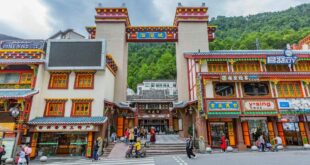History The Monlam Festival (Tibetan: སྨོན་ལམ།, meaning “Prayer Festival”), also known as the Great Prayer Festival, is one of the most important religious festivals in Tibetan Buddhism, particularly in the Amdo region of Tibet (present-day Qinghai Province). It is celebrated by the Tibetan people across the Tibetan Plateau, including Amdo, …
Read More »Kangding / Dartsedo དར་རྩེ་མདོ། Ganzi Tibetan Autonomous Prefecture
Dartsedo or Kangding in Chinese was on the historical border between Tibet and China, from Kangding to the west lies Tibetan civilization where as to the east Chinese cultural areas; It was the capital of the Kingdom of Chakla. During its history, Kangding has witnessed many conflicts between Tibetan and …
Read More »Haiyan / Dabzhi
Haiyan County (海晏县) is a county in Qinghai Province, China. It is situated on the northeastern edge of the Qinghai Lake, the largest saltwater lake in China. The county belongs to the Haidong Tibetan Autonomous Prefecture and is known for its natural beauty, cultural diversity, and historical significance. Location: Coordinates: …
Read More »Mt Kailash གངས་རིན་པོ་ཆེ།
Mount Kailash (Kangrinboqê Peak, 冈仁波齐峰), located in the Tibet Autonomous Region of China, is one of the most sacred mountains in the world, revered by followers of Hinduism, Buddhism, Jainism, and Bon. Standing at 6,638 meters (21,778 feet), Mount Kailash is a spiritual hub and a destination for pilgrimage. Its …
Read More »Shangrila སེམས་ཀྱི་ཉི་ཟླ Diqing Tibetan Autonomous Prefecture
Shangri-La (香格里拉) is a county-level city located in the Diqing Tibetan Autonomous Prefecture in Yunnan Province, China. Formerly known as Zhongdian (中甸), it was renamed in 2001 to reflect its association with the mythical paradise described in James Hilton’s novel Lost Horizon. Shangri-La is renowned for its breathtaking natural landscapes, …
Read More » Tibet World Travel Tibet Tour, Tibet Trip, Tibet Travel, Tibet Train, Tibet Trekking,
Tibet World Travel Tibet Tour, Tibet Trip, Tibet Travel, Tibet Train, Tibet Trekking,




